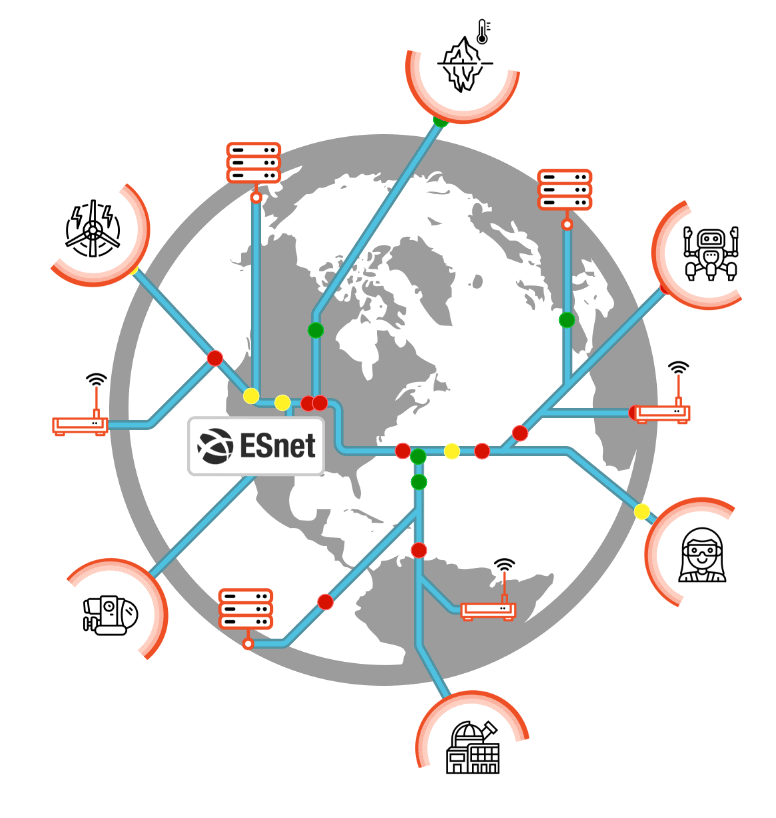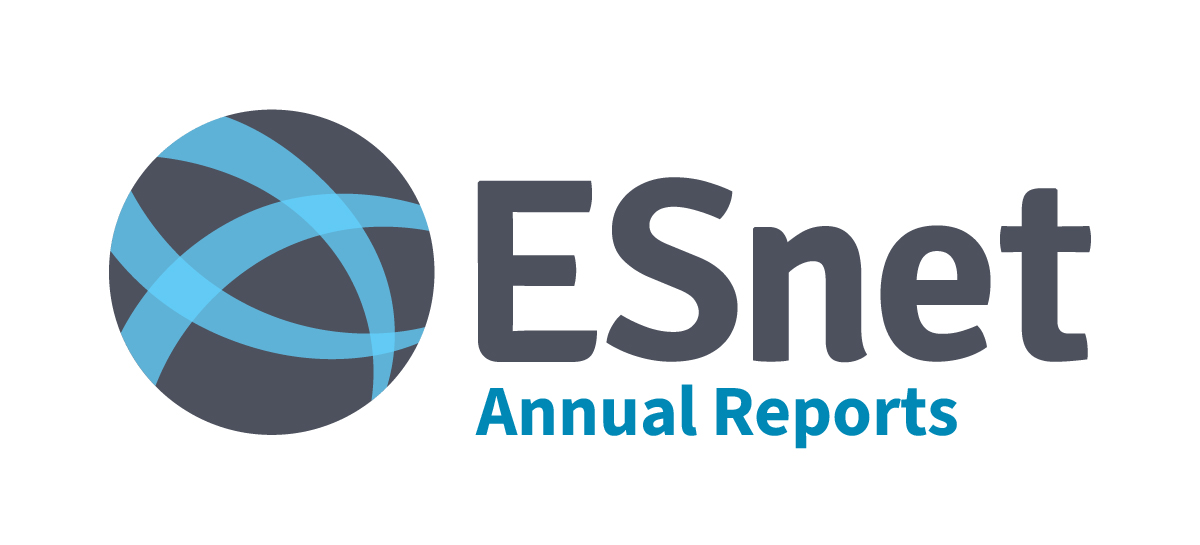
The Lifeblood
of Discovery
“The ESnet user facility is the Department of Energy’s data circulatory system.”
We’ve used this phrase for several years because it perfectly describes our mission. Like a human circulatory system, ESnet must operate continuously — without congestion or downtime — to keep the DOE research enterprise healthy. If we falter, the impact on U.S. scientific productivity and leadership would be significant. Yet, like the body’s circulatory system, our work is often taken for granted.
This year, for our CY2024 annual report, I want to use that metaphor to explain how we balance operational excellence, innovation, and collaboration to serve the DOE mission, prepare for the future, and strengthen the global research ecosystem.

Operational Excellence: Maintain and deliver high-performance networking services that are reliable, cost-effective, and responsive — 24x7x365.
Keeping the circulatory system healthy is our foremost responsibility. ESnet cannot take days offline for network upgrades or repairs. We must operate every hour of every day while expanding capabilities, supporting new science use cases, and anticipating future demands.
In 2024, ESnet achieved 100% availability for all Office of Science sites. This reflects our proactive investment in the Site Resiliency Program and rigorous capacity planning to prevent congestion and meet the growing data needs of science. Our customer satisfaction score rose slightly, from 4.85 to 4.88 out of 5, a testament to our ability to serve DOE’s “major organs” — the national labs and user facilities.
We strive for continuous improvement and to prioritize our efforts strategically through regular internal discussion and careful allocation of resources. I want to be first to acknowledge that we must prioritize progress over perfection, because no matter how hard we try, we will always be limited by resources and unforeseen demands.
Serving the Mission: Create impactful, innovative solutions to “accelerate science” while serving the broader DOE mission (NNSA, DOEnet, and others).
As an Office of Science user facility, our first objective is to serve its mission, and we do so by “accelerating science.” This means holding regular requirement reviews so we can truly understand the long-term data needs of our science users. It means engaging in operational and technical innovation so we can enhance scientists’ access to artificial intelligence and machine learning (AI/ML) tools, High Performance Computing (HPC), new instruments, enormous data sets, and expert collaborators. And it means building relationships through our human network so that users across scientific disciplines can learn from each other, better understand what the circulatory system has to offer, and leverage it to its full potential. That is why ESnet staff are invited to speak at so many conferences and why we host our flagship user meeting, Confab.
Executing Federal Program Priorities: Execute on DOE Office of Science priorities — including ASCR’s priorities for HPC, the Integrated Research Infrastructure (IRI) program, the High Performance Data Facility (HPDF) project, AI, quantum, and cloud — through strategic planning and co-design engagements.
To meet the evolving needs of the “organs” we serve, we employ two primary strategies. The first is co-design: Embedding ourselves within science programs to develop custom solutions for first-of-its-kind research. This deep engagement ensures we grow alongside our partners, whether through new services, expanded capabilities, or increased impact. Examples include EJFAT, Greenfield Wireless, the LHC Data Challenge, GRETA/DELERIA, and SENSE/Rucio integration — all described in these pages.
The second is through our project contributions. We collaborate closely with ASCR program managers to advance initiatives such as IRI, the High Performance Data Facility (HPDF) project, AI operations, quantum networking, and enterprise cloud access.
Upgrading for the Future: Expand and evolve the facility to support the next generation of science.
Every ESnet generation — now at six and counting — has transformed the facility to meet future demands. We must continually refresh infrastructure to address equipment obsolescence, rising data volumes, and new scientific workflows such as AI-driven analysis and real-time streaming. Unlike HPC facilities, no vendor delivers turnkey solutions for ESnet. Our engineers design, build, and integrate the network themselves, balancing diverse requirements and best-of-breed technologies. This drives our pathfinder projects, vendor collaborations, and global community engagement.
In CY2024, we advanced planning for ESnet7, presenting our 10-year vision to ASCAC and aligning with major ASCR initiatives. This work continues into CY2025.
Strengthening the Global Research & Education Ecosystem: Collaborate internationally to ensure science data flows seamlessly worldwide.
A circulatory system is only as effective as its most clogged arteries. Similarly, ESnet’s performance depends on the health of our sites’ IT infrastructure, university networks, regional and national backbones, and international partners. The Vera Rubin Observatory project illustrates this interdependence. Capturing and transmitting images from a mountaintop in Chile to SLAC in California within 7 seconds requires flawless coordination among DOE, NSF, regional networks in South America and the U.S., and many other entities. This is just one example of the global partnerships that make modern science possible.
ESnet also contributes to the broader ecosystem by sharing best practices, releasing open-source tools such as perfSONAR and iperf3, and engaging with the global networking community to ensure that science everywhere can flourish.

In this note, I have tried to provide a lens through which to view the priorities driving our resource allocation, what we invest in as a user facility, and how we grow to meet the challenges of tomorrow. I hope you enjoy reading about our work in 2024 as much as I have enjoyed leading this extraordinary team.
Sincerely,
Inder Monga
Executive Director, ESnet
